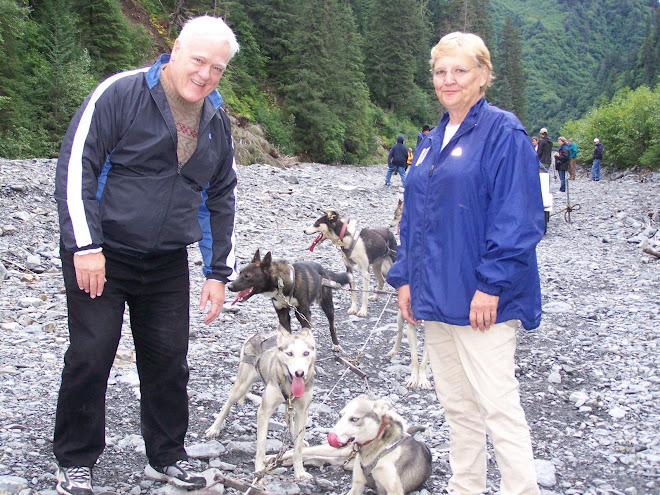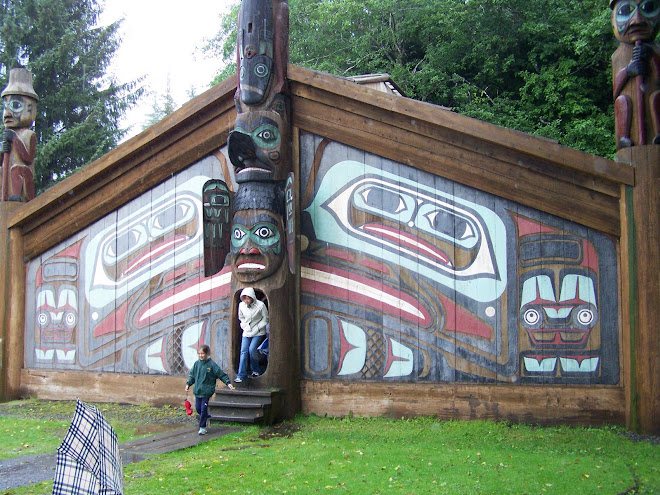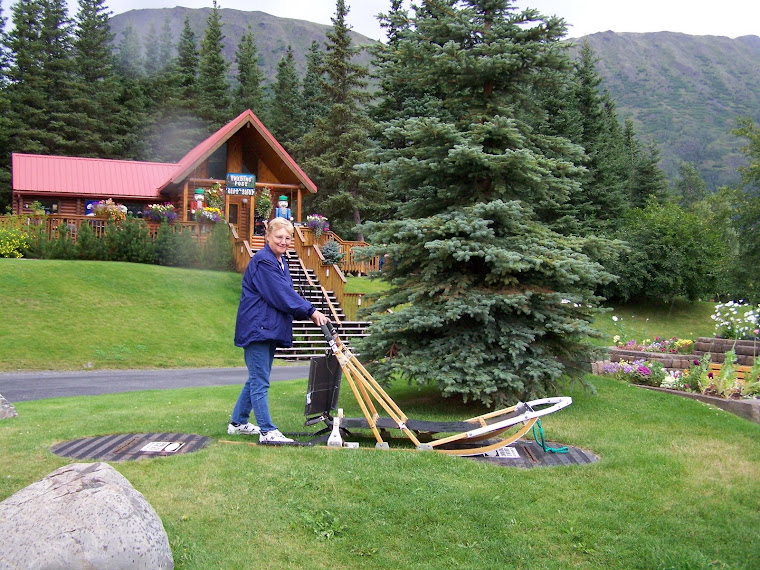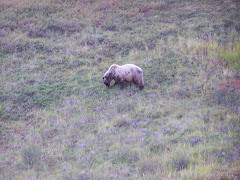
Right: White Pass & Yukon narrow gauge train approaching wooden trestle and stone tunnel
After an evening at sea, our ship pulled into the port of call of Skagway, Alaska this morning.
Skagway was founded during the 1890s gold rush era as a jumping off spot for would be prospectors. At one time the largest city in Alaska, it currently has only nine hundred residents and is supported almost entirely by cruise ship tourism.
After breakfast we walked into town for some shopping and sightseeing. The shallow, fast water creeks which flow into the harbor were literally stuffed with spawning salmon. As with all of the coastal places we have visited, the town and its harbor are ringed with huge coastal mountains. The downtown area (the entire city is only a few blocks square) is composed of frame buildings which serve as shops offering everything from reindeer hides, through native art to diamond and gold jewelry. There is a “boot hill” cemetery containing the graves of assorted characters from the gold rush era.
After a light lunch aboard ship, we boarded the White Pass & Yukon narrow gauge railroad for a trip to the summit of White Pass, which was the gateway to the Klondike gold fields in the Canadian Yukon. We learned that over one hundred thousand hopeful prospectors came through Skagway and over its mountain passes. A small fraction of those, perhaps forty thousand, actually reached the gold fields of the Klondike, and only a few hundred ever found gold, most of those collecting a trivial amount. For less than one hundred intrepid and lucky souls, fortunes were made. The other ninety nine thousand faced exhaustion, financial ruin, injury or even death.
Before the railroad was built, prospectors climbed to the pass on foot, leading pack animals loaded with all of their supplies. The trip to the Klondike was over six hundred miles. Part of the old foot trail is still visible in places, only a few feet wide. The prospectors had to go single file, and many of them or their animals died falling off the foot trail and plunging over the side of the mountain.
Our rail trip was spectacular, clawing its way up a grade carved out of the side of shear mountain rock. For over twenty miles and a rise of three thousand feet from sea level, we passed mile after mile of wild river rapids, waterfalls, mixed forests and gorgeous mountain vistas. The surrounding peaks soared to over seven thousand feet. Our path took us over rickety trestles, around switchbacks on the edge of cliffs and through tunnels punched through solid mountain rock. It was all the more amazing to realize that this was constructed by men with picks and shovels, using black powder to blast rock, in the late 1800s. We were told that thirty five thousand men worked on the railroad right of way with thirty five killed for their trouble. And after the gold rush played out, the railroad became largely useless. Today it is used almost solely for tourists.
Tonight it’s another floor show, dinner in the main dining room and on to Ketchikan and hopefully bear viewing tomorrow.





No comments:
Post a Comment